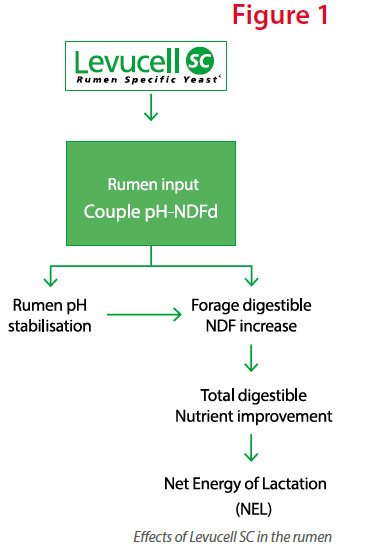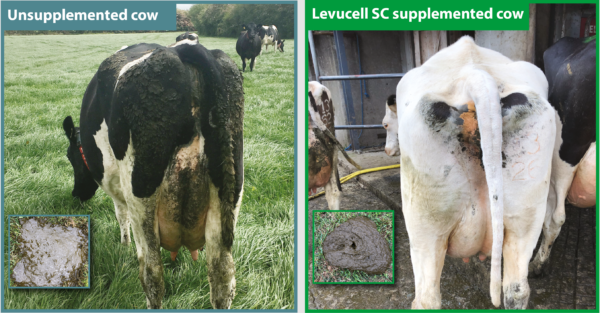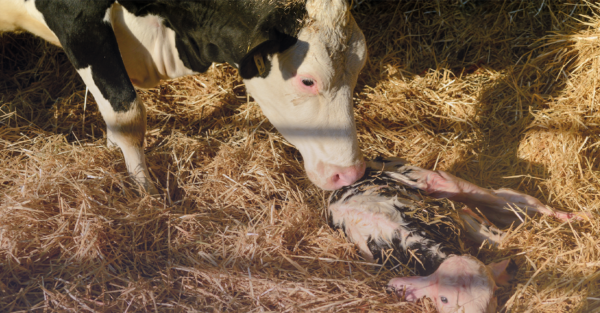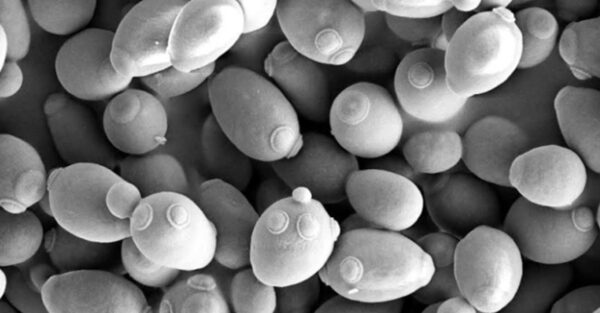Blog | Reading Time 2 minutes
Precision feeding: the yeast factor
Effects of the rumen specific live yeast Saccharomyces cerevisiae CNCM I-1077 on fiber degradation is well documented. Thanks to the mode of action of the live yeast, an algorithm could be developed to predict the effect of the supplement on feed digestibility when formulating for ruminants.
Building a dynamic model
 S. cerevisiae CNCM I-1077 (LEVUCELL SC) improves neutral detergent fiber (NDF) degradation in the rumen through its modulation of the endogenous microbiota. However, we also know this effect must be modulated by the pH of the rumen. Indeed, a low pH has a deleterious effect on the ruminal fibrolytic microflora. Hence, the lower the pH, the lower the fiber degradability. The other known effect of Levucell SC is the stabilization of the rumen pH. Therefore, the extent of the effect of the yeast on fiber degradation is even more important when the pH is low or the diet is acidogenic. We evaluated the effect of LEVUCELL SC on the degradability of a large array of feed and forage samples. Then, we estimated the rumen pH according to the level of rapidly fermentable sugars in the ration. With this information, it was possible to establish an algorithm that predicts the percentage of extra energy available from a ration in the presence of this rumen modifier. By taking into account the kinetics of fiber degradation and the environment of the rumen (pH), we are providing a new dynamic approach to feed formulation. The innovation was to build a biological system that takes into account the rumen microbiota activity (Figure 1).
S. cerevisiae CNCM I-1077 (LEVUCELL SC) improves neutral detergent fiber (NDF) degradation in the rumen through its modulation of the endogenous microbiota. However, we also know this effect must be modulated by the pH of the rumen. Indeed, a low pH has a deleterious effect on the ruminal fibrolytic microflora. Hence, the lower the pH, the lower the fiber degradability. The other known effect of Levucell SC is the stabilization of the rumen pH. Therefore, the extent of the effect of the yeast on fiber degradation is even more important when the pH is low or the diet is acidogenic. We evaluated the effect of LEVUCELL SC on the degradability of a large array of feed and forage samples. Then, we estimated the rumen pH according to the level of rapidly fermentable sugars in the ration. With this information, it was possible to establish an algorithm that predicts the percentage of extra energy available from a ration in the presence of this rumen modifier. By taking into account the kinetics of fiber degradation and the environment of the rumen (pH), we are providing a new dynamic approach to feed formulation. The innovation was to build a biological system that takes into account the rumen microbiota activity (Figure 1).
Field validation
The algorithm was validated at the farm level by Professor Djamila Lekhal at the Purpan Engineering School in Toulouse, France (Ali Haimoud-Lekhal et al., 2016). In this controlled trial, conducted on 38 Holstein dairy cows fed a non-acidogenic diet based on corn silage, alfalfa hay and bicarbonate, the live yeast supplementation increased milk production by 1 Kg/day while improving feed efficiency by 6%. This is correlated to the predicted effect using our algorithm (+1.1 Kg Milk/day). Other studies also confirm the accuracy of the prediction.
Implication for feed formulation
At the feed mill level, this model can be implemented within formulation systems to give an energy value to the live yeast supplement and help precision feeding. The live yeast effect can be considered either when seeking to maximize milk production or to reduce feed costs in a context of least-cost formulations.
Published Nov 13, 2019 | Updated May 29, 2023
Related articles
Need specific information?
Talk to an expert


